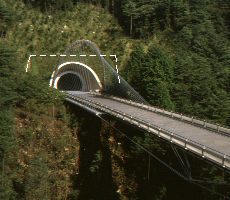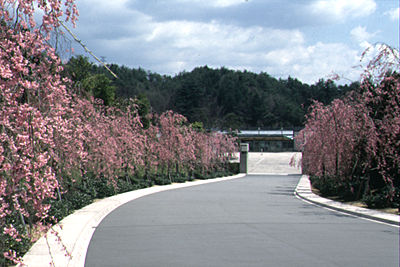

|
After following a path lined with peach trees in full bloom and passing through a tunnel, the traveler discovers the lost paradise of Toh Gen Kyo |
|||
|
|
 The end of the facing is indicated by the dotted line. |
||
| The construction crew worked day and night to remove
the concrete facing and replace it with greenery in time for the
grand opening. The result was that the tunnel's mouth as seen from
the Museum resembled a gaping cave in the side of a mountain, very
much like that the fisherman would have seen in the old Chinese
tale. By the time the new greenery provided adequate cover, the architect paid another visit. While inspecting the other end of the tunnel he said, “Let's plant a large tree to hide the concrete entrance to the tunnel.” “The pavement on the bridge is very nice. Why don't we stretch it out beyond the tunnel ?” he added. The pavement was made with small ceramic shards that helped carry rainwater to refresh the plants in the valley below. In the short period during the museum was closed in winter, ceramic pavement was extended to the path that is now lined with weeping cherry trees. At last, Mr. Pei seemed satisfied. |
|||
